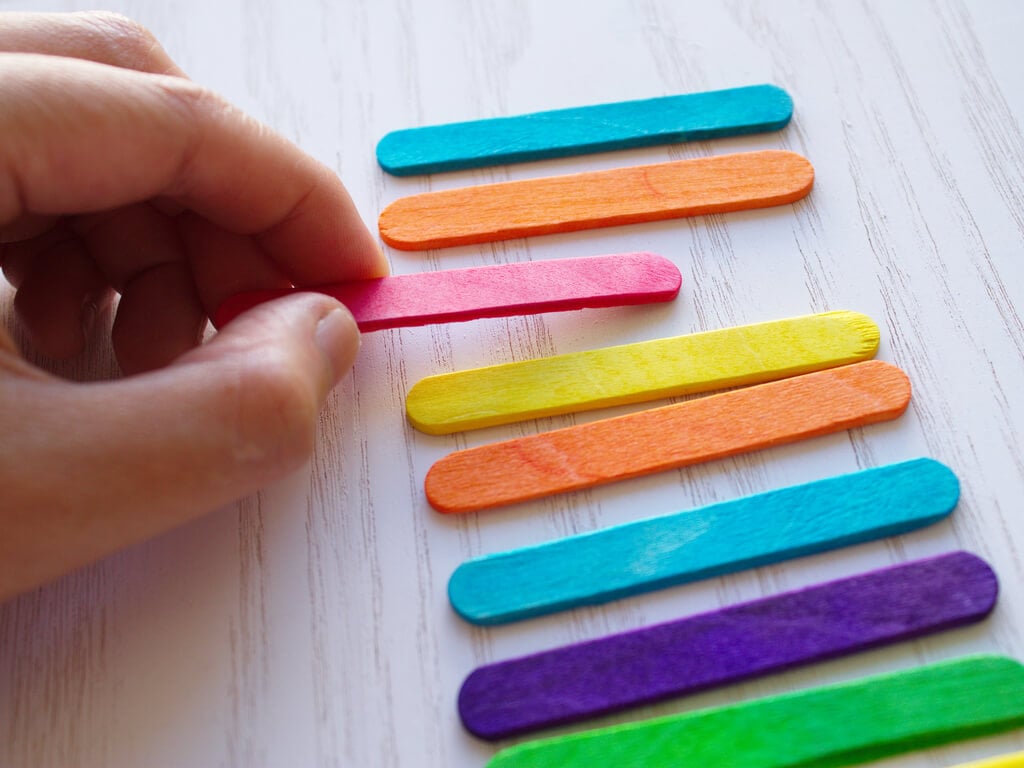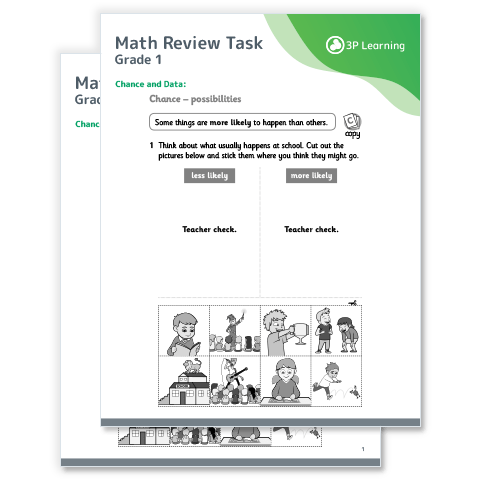
There are multiple steps to follow, and new numbers being generated while others are crossed out – what’s going on?
Teaching the concept of regrouping can quickly become confusing – for you as well as your students.
But if you start by using manipulatives, things are much easier. We’ve broken down a strategy using popsicle sticks to make the process clearer for your students, and easier to teach for you.
What your students should already know
Move onto regrouping only after students have demonstrated a firm understanding of place value, and confidence with single-digit addition. If they’re still coming to terms with the “tens” and “ones” columns, it won’t make much sense.
What each student will need
- A3 paper and a crayon for each student
- a handful of popsicle sticks
- rubber bands.
Process
Step 1
Have each student draw two large boxes on their sheet of paper. Label them so they represent the “tens” and “ones” columns.
Step 2
Explain to students that each popsicle stick has a value of one, so they’ll need to create lots of 10 to go in the tens column. Have them bundle these together using the elastic bands
Step 3
Put a two-digit number on the board and have students visually represent the number by putting popsicle sticks into the place value columns. For example, 24 would have four individual sticks in the ones column and two bundles in the tens column.
Step 4
Keep the first number but add another, and write the full sentence on the board (e.g. 24 + 8). Tell students to find the answer by adding eight sticks into the appropriate column.
Step 5
At this stage it’s likely most students will put eight single popsicle sticks into the ones column, making 12 ones in total. See if they can figure out what’s wrong here by asking “Do you think it looks right?”
Step 6
With some gentle prompting, guide students to bundle up another lot of 10, which they can then put into the tens column. And there you have it, the correct answer of 32 is right in front of them!
Moving into numbers
It’s easy for students to forget what goes where when you start expressing regrouping in numbers. Make sure you model it yourself first, and use arrows to give them a sense of direction moving through the addition problem (especially at the point where you carry over the extra ten).
Need more help teaching elementary math?
Read up on best practice instructional strategies for math, or check out the free printable math resources in our help hub by clicking the link below.














